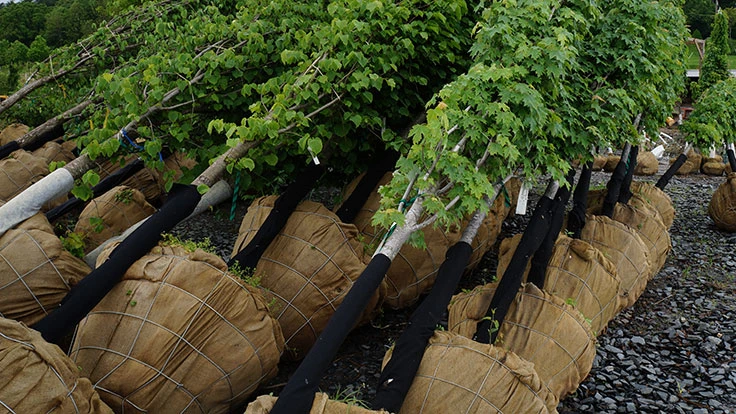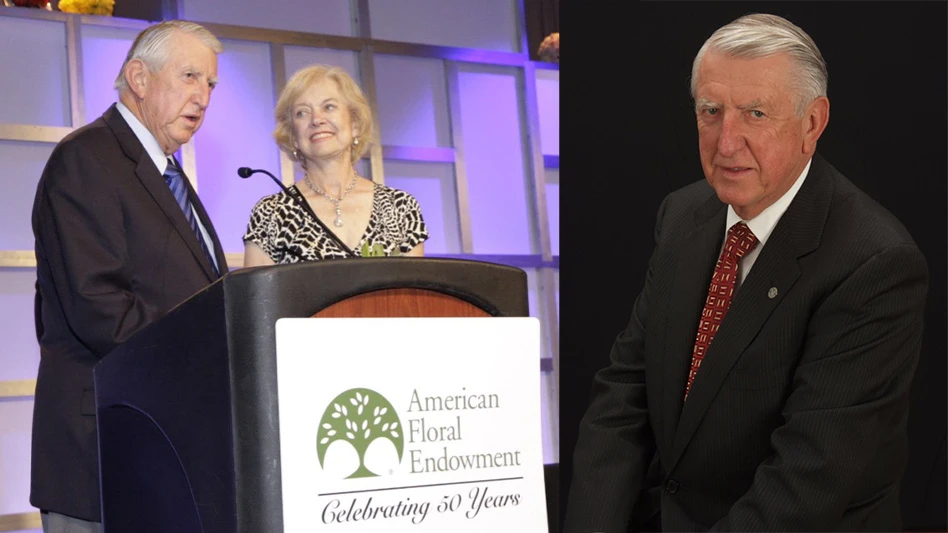
Matt McClellan
Transplanting established trees and shrubs can be risky because you will damage many of the feeder roots during the transplanting process. Feeder roots are responsible for absorbing the majority of essential nutrients and water. To minimize the shock to the plant, the Penn State University Extension educator Emelie Swackhamer recommends root pruning several months to one year in advance of the move, depending on the size and type of the plant.
Root pruning
Pruning the roots will encourage the plant to produce a flush of new feeder roots. The goal is to allow the plant to develop new feeder roots within the zone of the future root ball that will be moved. This will reduce the amount of transplant shock the plant experiences. Before root pruning you should consider the size of the root ball that will be moved. Click here to view a table showing minimum root ball sizes for specific plant sizes. The greater the root ball diameter, the more roots will be included in the move. Also remember that bigger root balls weigh more. Consider how the plant will be lifted and moved. Ball carts, wagons, tarps, or thick folded cardboard can be helpful in transporting the dug plant to its new location.
When to root prune depends on when you wish to move the plant. For most plants, root pruning is recommended in the fall, followed by transplanting in the spring. This allows the plant to grow new feeder roots in the pruned zone over the winter without the burden of supporting new growth. For larger plants, you may want to root prune one year or more before transplanting. Keep in mind larger plants will need more time to become established after transplanting. Alternatively, rooting pruning in the spring for a fall move is possible; however, the root pruned plant will need to be watered during summer dry spells. Be aware some plants do not respond well to being moved in the fall, especially those with thick and fleshy roots (e.g., Magnolia, tulip poplar, oaks, birch, rhododendrons, hemlocks, and flowering dogwood).
Methods for root pruning vary. One method called spading involves cutting through the existing roots with a spade, making a circular cut all the way around the plant. The edge of this cut should be just inside the edge of the future root ball. Spading works best for small plants or plants that have not been in the old site for a long time.
Another method called trenching involves digging a trench around the plant and refilling the trench where the new feeder roots with develop with soil high in organic matter. Trenching is more appropriate for plants that have been located in the old site for several years or more. Trenching techniques also vary, depending on plant size. Trenching can be done all the way around the plant or only part of the way around the plant, followed by further trenching later in the season. To root prune using trenching, dig a trench 8 to 12 inches wide or wider, 12 inches deeper or deeper with the outer edge of the trench corresponding to the outer edge of the future root ball. Next, fill the trench with soil high in organic matter, made by mixing two parts topsoil with one part compost. If conditions are good, the plant will grow new feeder roots in the trench of rich soil by transplanting time. These feeder roots will give the tree added ability to withstand transplant shock. Be sure to move as many of these new, young roots as you can when you move the plant. Before digging the root ball for transplanting, check to see if a good net of fibrous roots has developed. If few roots are found in the trench, you should consider postponing the move for another year. In addition, when you do decide to move the plant, digging a root ball larger than originally planned may assure that all of the new roots go with it.
Once the roots are pruned, special care should be taken to assure the root ball receives sufficient moisture, especially in the event of a dry fall or winter season. Check for soil moisture levels by feeling the soil. If the soil is dry two to three inches below the surface, give the tree a good soaking, assuring that the trench area is well watered. A two to three inch layer of mulch over the root ball but not in contact with the trunk or stems of the plant can help hold moisture in the soil and also protect the roots from cold temperatures during the winter.
Transplanting
Prior to moving the plant, prepare and dig the hole for the plant in the new location. Also soak the root ball of the plant before moving so that the soil will remain together during the digging process. Carefully dig the soil away from the root ball, and then wrap the whole ball in untreated natural burlap. Be very careful not to use synthetic burlap because it will not rot away and will eventually restrict the growth of the roots. Lash the burlap together securely to hold the roots firmly in place. You can do this by using a large upholstery needle and untreated natural twine to stitch the burlap tightly around the root ball.
Carefully move the plant using a cart, a rented ball cart, burlap, or cardboard. The goal is to keep the root ball intact. If the soil ball breaks, it will break the roots inside and may lead to the death of the plant. Make sure the plant is set at the same depth in the new hole and fill in around the root ball with topsoil. Mulch lightly with three to four inches of mulch, keeping the mulch off of the trunk or stems of the plant, and be sure to provide adequate water throughout the entire next growing season.
Source: Penn State University Extension
Get curated news on YOUR industry.
Enter your email to receive our newsletters.Latest from Nursery Management
- Grant awarded to test western U.S. wood species for use as wood fiber potting substrate
- Pennsylvania Horticultural Society announces 2025 Gold Medal Plant winners
- Leading Women of Horticulture: Angela Labrum, Bailey Nurseries
- The HC Companies, Classic Home & Garden merge as Growscape
- Terra Nova releases new echinacea variety, 'Fringe Festival'
- Eason Horticultural Resources will now officially be known as EHR
- BioWorks receives EPA approval for new biological insecticide for thrips, aphids, whiteflies
- Ellen Mackenbach-Lakeman appointed new CEO of Dümmen Orange







